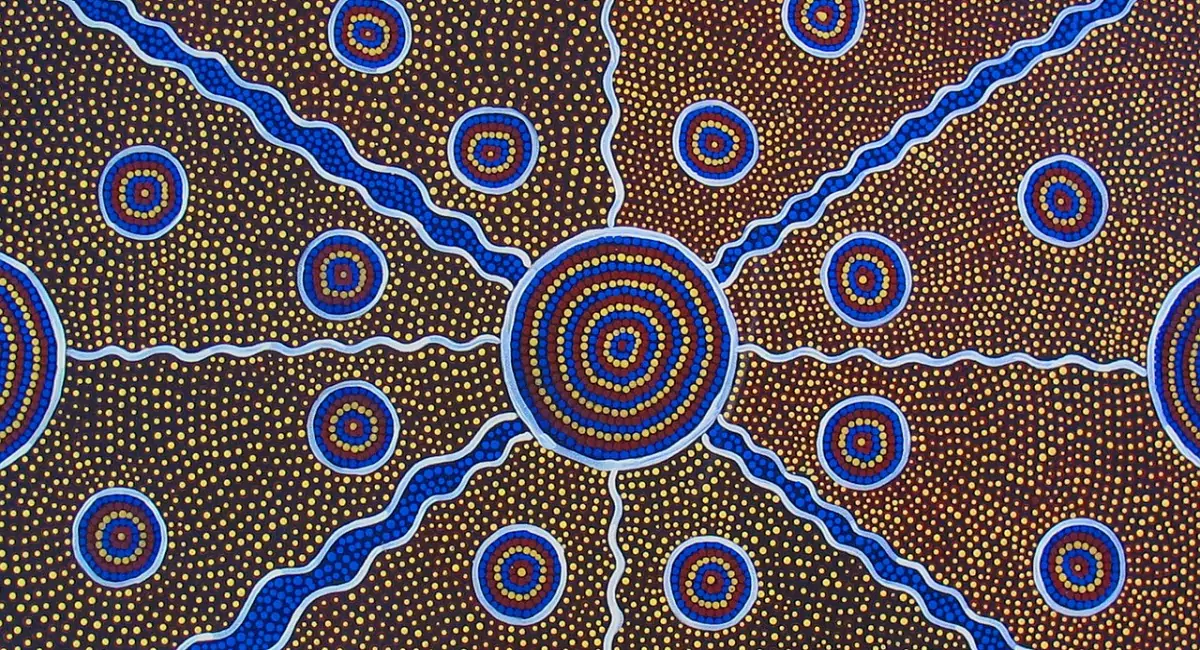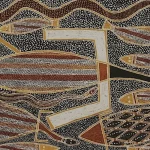
Painting the Dreaming: Aboriginal Dot Art and Its Meanings
If you have heard or seen Aboriginal dot art, also known as dot painting, you will notice how distinctive and iconic this art form is. Dot painting that has captivated art enthusiasts worldwide with its intricate patterns of dots, meticulously applied to create vibrant and visually striking artworks. Dot art is deeply rooted in the Dreaming, the spiritual and cultural belief system of Aboriginal communities, and each dot carries symbolic meanings. This article delves into the origins, techniques, cultural significance, and symbolic meanings behind Aboriginal dot art.
Origins and Historical Context
Dot art has a long history among Indigenous Australian communities and dates back to tens of thousands of years. While there is no exact date as to when this art form started, it is believed to have emerged as a way to communicate Dreamtime stories and cultural knowledge through visual representations. The Dreaming, an essential concept in Indigenous stories in Australia as it encompasses the creation myths, ancestral beings, and the connection between the land and its people. Dot art serves as a visual language for expressing and preserving these sacred narratives.
Techniques and Materials
To create these dot paintings, Indigenous artists use a meticulous technique and a steady hand. Traditionally, natural pigments and materials such as ochre, clay, and charcoal were used to create the dots. In contemporary dot art, acrylic paints have become a popular medium, offering a wide range of colours and allowing for greater flexibility in artistic expression. Artists use various tools to create the dots, including brushes, sticks, and even their fingertips, each contributing to the unique texture and style of the artwork.
Symbolic Meanings in Dot Art
Every dot in Aboriginal dot art carries significant symbolic meanings. There are different colours and arrangements of dots that represent various elements of the Dreaming and the natural world. For instance, the colour yellow may represent the sun, while blue could symbolise water or the sky. Dots arranged in concentric circles often represent waterholes or gathering places, while straight lines of dots might depict a river or a journey. These intricate patterns and combinations of dots help create a visual delight, conveying complex stories and cultural insights.
Tip
Along with dot painting, Indigenous street art also has many symbolic meanings and you can learn more about this in the article, Murals with Cultural Significance.
Connection to Country and Ancestral Beings
Dot art is deeply connected to the land, with each artwork representing a specific place or location in the landscape. The Dreaming stories associated with these places and ancestral beings are passed down through various generations and create the foundation of Aboriginal cultural identity. Dot art serves as a visual map of this sacred relationship between the people, their ancestors, and the land they have inhabited for thousands of years.
Cultural Significance and Storytelling
Dot art plays a vital role in preserving and sharing Aboriginal culture and history. It serves as a powerful storytelling tool, allowing artists to pass on traditional knowledge, ceremonies, and customs to future generations. The artworks also carry spiritual significance, as they are often used in ceremonies and rituals to connect with ancestral beings and seek guidance from the Dreaming.
Contemporary Adaptations and Global Recognition
While dot art has deep roots in Aboriginal traditions, contemporary artists have also started adapting and expanding the art form by adding new themes and styles. Some artists blend traditional dotting techniques with modern artistic styles, creating a fusion of the traditional and the contemporary. As a result, Aboriginal dot art has gained global recognition and is highly sought after by collectors and art enthusiasts.
Preserving Indigenous Cultural Heritage
The popularity of dot art has led to increased awareness of Indigenous Australian culture. However, it is essential to recognise the significance of these artworks and their cultural context. To ensure the preservation of Indigenous cultural heritage, it is crucial for artists, collectors, and consumers to understand the sacred meanings behind dot art and the significance of the Dreaming in Aboriginal communities.
Tip
You can also read about another Indigenous art form that is gaining popularity across the globe in the article, Pottery in Indigenous Australian Art.
Conclusion
Aboriginal dot art is more than just a visually captivating art form; it is a powerful and sacred expression of Indigenous Australian culture and spirituality. With deep roots in the Dreaming, each dot symbolises Aboriginal history, connecting the artists, their ancestors, and the land they hold sacred. As dot art continues to gain global recognition, it is essential to approach it with respect for the rich cultural heritage it embodies. By doing so, we can appreciate the true depth and significance of Aboriginal dot art and honour its enduring place in the world of contemporary art.





